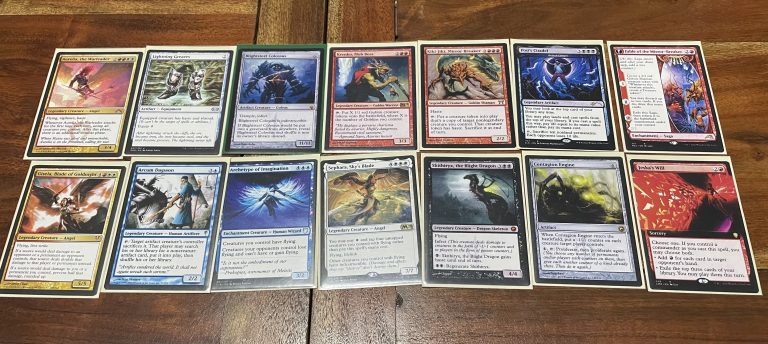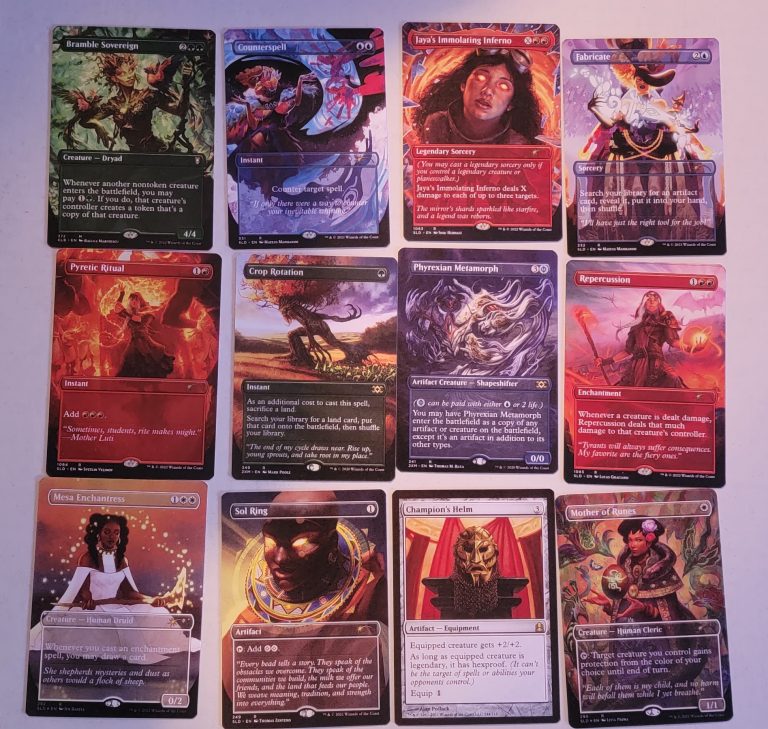Introduction:
Magic: The Gathering (MTG) is a popular trading card game that has been around for over 25 years. With over 20,000 unique cards in circulation, collecting and playing MTG can be an expensive hobby. To save money, some players choose to Buy MTG proxies, which are replicas of official MTG cards. If you’re new to the world of MTG proxies, it can be overwhelming to know where to start. This guide will provide you with everything you need to know about buying MTG proxies, including the types of proxies available, the factors that affect their quality, the legality of buying and using proxies, where to buy them, and tips for making a safe and informed purchase.
Types of MTG Proxies
There are different types of MTG proxies, each with its own benefits and drawbacks. Here are the most common types of MTG proxies:
- Print-on-Demand Proxies: These proxies are created using a printer and cardstock. They are printed on demand, meaning that the seller creates them when a customer places an order. Print-on-demand proxies can be customised to look like any MTG card, including rare and expensive ones. However, the quality of print-on-demand proxies can vary, as the quality of the printer and cardstock used can impact their durability and appearance.
- Hand-Made Proxies: These proxies are created by hand, often using a combination of paint, markers, and stickers. Hand-made proxies can be highly detailed and customised to look like any MTG card. However, the quality of hand-made proxies can vary greatly, as the skill level of the creator and the materials used can impact their durability and appearance.
- Pre-Made Proxies: These proxies are pre-made and sold by MTG proxy manufacturers. They are created using a high-quality printer and cardstock and are designed to look like official MTG cards. Pre-made proxies can be of consistent quality, but they may not be as customizable as print-on-demand or hand-made proxies.
Quality Factors of MTG Proxies
When buying MTG proxies, it’s essential to consider their quality. The following factors can impact the quality of MTG proxies:
- Cardstock: The quality of the cardstock used can impact the durability and appearance of proxies. Lower-quality cardstock can easily bend, tear, or fade, while higher-quality cardstock can withstand frequent use.
- Printer: The quality of the printer used can impact the clarity and vibrancy of the image printed on the proxy. A high-quality printer can produce proxies that look like official MTG cards.
- Ink: The type of ink used can impact the durability and appearance of proxies. Some types of ink may fade or smudge over time, while others may bleed or feather.
- Image Resolution: The resolution of the image used to create the proxy can impact its quality. A higher resolution image can produce a clearer and more detailed proxy.
Legality of Buying and Using MTG Proxies
The legality of buying and using MTG proxies is a gray area. While proxies themselves are not illegal, using them in official MTG tournaments or events is against the rules. Some MTG players choose to use proxies for casual play or to test out new decks before investing in official cards. It’s important to note that buying and selling counterfeit MTG cards is illegal. If you’re buying MTG proxies, make sure that the seller is not claiming them to be official cards. Be aware that using proxies in official MTG events can result in disqualification, and some local game stores may also refuse to allow proxies to be used in their tournaments.
Where to Buy MTG Proxies
There are many online retailers that sell MTG proxies, but it’s important to do your research before making a purchase. Here are some tips for finding a reputable seller:
- Check reviews: Look for reviews from other customers to get an idea of the quality of the seller’s proxies and their customer service.
- Compare prices: Compare prices from different sellers to make sure you’re getting a fair deal.
- Check for authenticity: Make sure the seller is not claiming their proxies to be official MTG cards.
- Look for customization options: If you’re looking for a specific card or artwork, make sure the seller offers customization options.
Tips for Making a Safe and Informed Purchase
Before making a purchase, consider the following tips for making a safe and informed purchase:
- Know what you’re buying: Make sure you understand the type of proxy you’re buying and its quality factors.
- Set a budget: Decide on a budget before making a purchase to avoid overspending.
- Check the seller’s policies: Make sure you understand the seller’s return policy and shipping options.
- Use a secure payment method: Use a secure payment method, such as PayPal, to protect your personal and financial information. Be cautious of deals that seem too good to be true: If a deal seems too good to be true, it may be a scam.
Conclusion:
In conclusion, buying MTG proxies can be a cost-effective way to collect and play MTG cards. By understanding the types of proxies available, the factors that impact their quality, and the legality of buying and using them, you can make an informed and safe purchase. Remember to do your research, set a budget, and use a secure payment method to protect yourself and your investment. Happy gaming!
FAQs
Proxies themselves are not illegal, but using them in official MTG tournaments or events is against the rules. Counterfeit MTG cards are illegal.
Yes, many MTG players use proxies for casual play or to test out new decks before investing in official cards.
Cardstock, printer, ink, and image resolution can all impact the quality of MTG proxies.
There are many online retailers that sell MTG proxies, but it’s important to do your research to find a reputable seller.
Know what you’re buying, set a budget, check the seller’s policies, use a secure payment method, and be cautious of deals that seem too good to be true.
 Custom Gallery
Custom Gallery Proxy Booster
Proxy Booster Discord
Discord
